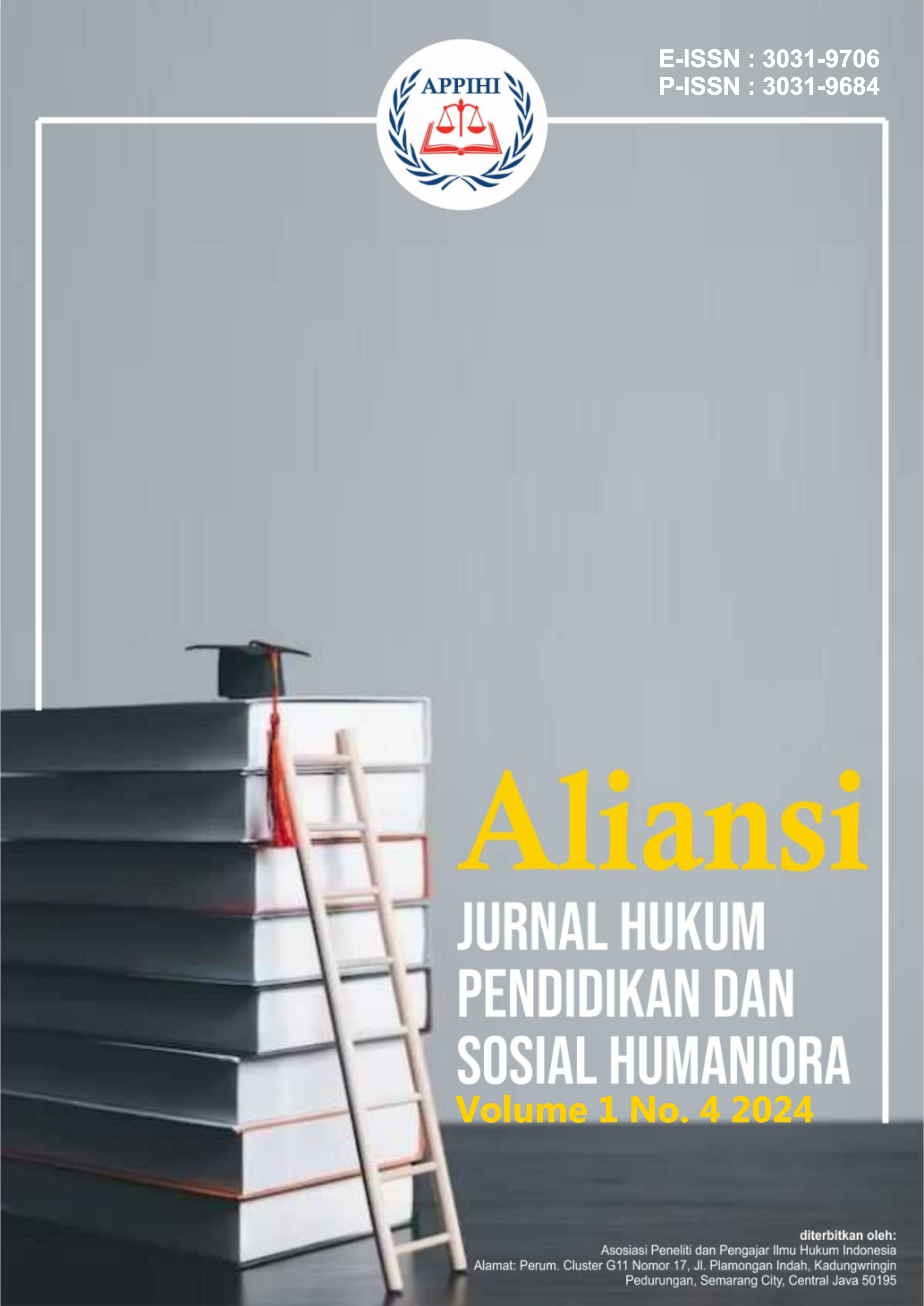Implementasi Nilai Kebangsaan Untuk Meningkatkan Cybersecurity: Berbasis UUD 1945: Studi Kasus Pada Perusahaan Valve Corporation Pada Aplikasi Steam
DOI:
https://doi.org/10.62383/aliansi.v1i4.287Keywords:
digital, security, cyber, UUD, Risk-BasedAbstract
In today's digital age, cybersecurity resilience is an urgent need. Organizations around the world face increasingly complex and rapidly changing threats. Given these challenges, it can damage national values. Risk-based security management has emerged as an effective way to improve cybersecurity resilience. The purpose of this study is to investigate how the implementation of risk-based security controls can improve cybersecurity resilience in the Company's environment based on the perspective of the 1945 Constitution.This study employs content analysis method to investigate policies, security practices, and incidents that occur at Valve Corporation in the context of cyber security. The research findings indicate that Valve Corporation has adopted various security strategies and technologies to protect their data and infrastructure from cyberattacks. However, there are still challenges such as evolving security threats and the complexity of global networks that require continuous updates in their security strategies.From the perspective of the 1945 Constitution, cyber security at Valve Corporation is also related to the protection of individual rights, information openness, and national technological independence. Therefore, companies need to consider national values in designing their security policies to ensure effective data protection while complying with relevant regulations.This research makes a valuable contribution to the understanding of the importance of risk-based security management in improving cyber security resilience, as well as providing practical guidance for organizations looking to improve their security strategies based on nationality values in the face of evolving threats in the digital world.
Downloads
References
Aji, M. P. (2023). Sistem keamanan siber dan kedaulatan data di Indonesia dalam perspektif ekonomi politik (Studi kasus perlindungan data pribadi). Jurnal Politica Dinamika Masalah Politik Dalam Negeri Dan Hubungan Internasional, 13(2), 222–238. https://doi.org/10.22212/jp.v13i2.3299
Akhuai, W., Nugraha, A. A., Lukitaningtyas, Y. K. R. D., Ridho, A., Wulansari, H., & Al Romadhona, R. A. (2022). Social capital of Pancasila education in smart education with social media in cybercrime prevention in the industrial revolution era 4.0. Jurnal Panjar: Pengabdian Bidang Pembelajaran, 4(2). https://doi.org/10.15294/panjar.v4i2.55047
Ardiyanti, H. (1986). Cyber-security dan tantangan pengembangannya di Indonesia. 95–110.
Arianto, A. R., & Anggraini, G. (2019). Membangun pertahanan dan keamanan siber nasional Indonesia guna menghadapi ancaman siber global melalui Indonesia Security Incident Response Team on Internet Infrastructure (Id-Sirtii). Jurnal Pertahanan & Bela Negara, 9(1), 13. https://doi.org/10.33172/jpbh.v9i1.497
Ginanjar, Y. (2022). Strategi Indonesia membentuk cyber security dalam menghadapi ancaman cyber crime melalui Badan Siber dan Sandi Negara. Jurnal Dinamika Global, 7(02), 291–312. https://doi.org/10.36859/jdg.v7i02.1187
Indah, F., & Sidabutar, A. Q. (2022). Peran cyber security terhadap keamanan data penduduk negara Indonesia (Studi kasus: Hacker Bjorka). Jurnal Bidang Penelitian Informatika, 1(1), 2. https://ejournal.kreatifcemerlang.id/index.php/jbpi/article/view/78
Kairupan, V. A., & Rahman, A. A. (2022). Analisis kesadaran cybersecurity pada pengguna media sosial di kalangan mahasiswa kota Bandung. Jurnal Darma Agung, 30(1), 1164. https://doi.org/10.46930/ojsuda.v30i1.3167
Putri, T. S., Mutiah, N., & Prawira, D. (2022). Analisis manajemen risiko keamanan informasi menggunakan Nist Cybersecurity Framework dan ISO/IEC 27001:2013 (Studi kasus: Badan Pusat Statistik Kalimantan Barat). Coding: Jurnal Komputer Dan Aplikasi, 10(2), 237–248.
Riskiyadi, M., Anggono, A., & Tarjo. (2021). Cybercrime dan cybersecurity pada fintech: Sebuah tinjauan pustaka sistematis. Jurnal Manajemen Dan Organisasi, 12(3), 239–251. https://doi.org/10.29244/jmo.v12i3.33528
Samudra, Y., Hidayat, A., & Wahyu, M. F. (2023). Pengenalan cyber security sebagai fundamental keamanandata pada era digital. Jurnal Pengabdian Masyarakat, 1(12), 1594–1601. https://journal.mediapublikasi.id/index.php/amma/article/view/1779
Setiawan, F. M. B. (2019). Analisis cybersecurity pada Bukalapak dan Tokopedia terhadap keamanan bertransaksi. UNPAR Institutional Repository, 1789. http://repository.unpar.ac.id/bitstream/handle/123456789/7903/Bab5%20-%20Daftar%20Pustaka%20-%201314014sc-p.pdf?sequence=3&isAllowed=y
Soegianto, A. (2021). Kandungan logam dalam jaringan kerang hijau. https://news.unair.ac.id/2021/12/10/kandungan-logam-dalam-jaringan-kerang-hijau/?lang=id
Soesanto, E., Putri, S. C. T., Aulia, A. A., Wicaksana, F. Y., & Thalitha, R. F. (2023). Sistem pengamanan file dan cyber security pada pengamanan objek vital PT PDAM. 6(2), 766–774.
Wikipedia. (12 C.E.). Valve Corporation. Valve Corp, 2016(1).
Downloads
Published
How to Cite
Issue
Section
License
Copyright (c) 2024 Aliansi: Jurnal Hukum, Pendidikan dan Sosial Humaniora

This work is licensed under a Creative Commons Attribution-ShareAlike 4.0 International License.





